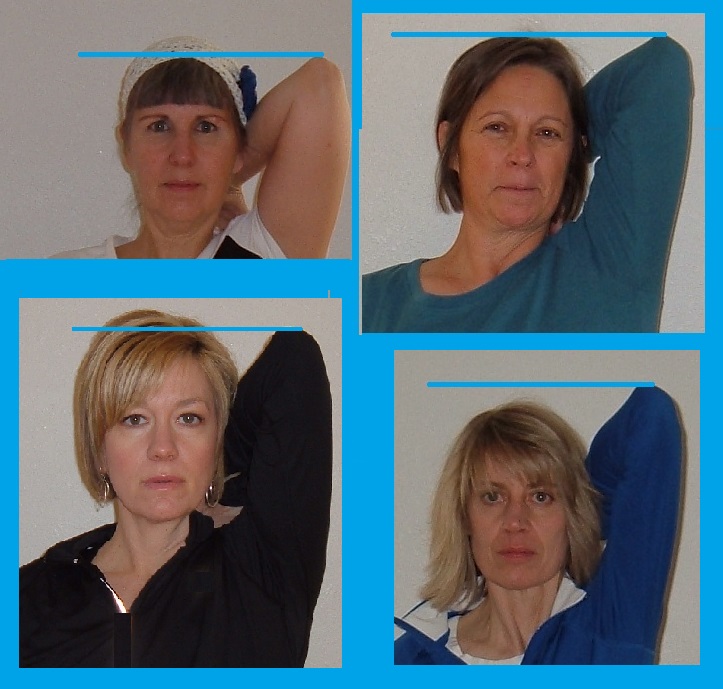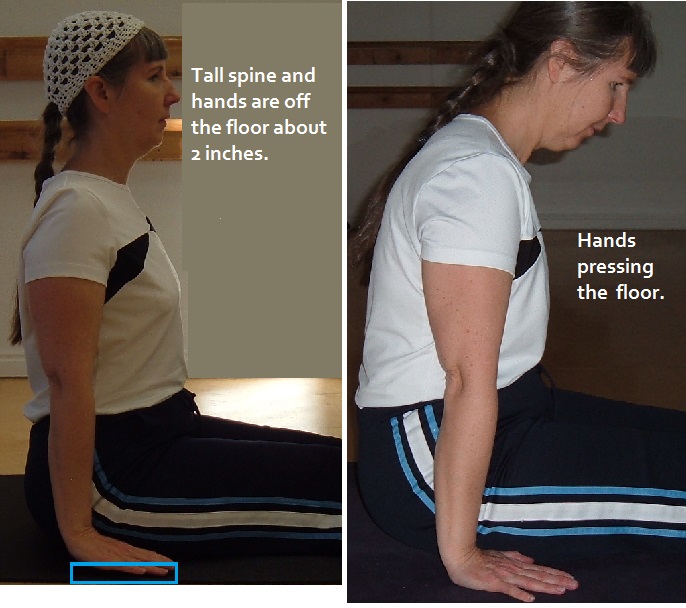We will return to the shoulders later, but now let’s explore the length of the arm bones. The first particular is the length of the upper arm in proportion to the length of the neck and head. Here is a picture showing a short arm, medium and long arm proportion.
Those students with medium and long arm proportion have the option of exploring the headstand. There would be little to no problem with too much weight on the head and neck. There might be other reasons for these students to not practice a headstand, but the head taking full weight on the ground would not be one of them.
For the student with short arms, there might be no way to have any weight off the head and neck even when pressing up with the whole shoulder girdle. If the student has a strong, wide, muscular neck, this might not be a problem, but for a student with more weight in the hips and legs, and less muscles in the shoulders and neck, practicing a headstand is probably contra-indicated. It could likely result in compression in the delicate cervical spine.
Another choice for a headstand is in between 2 chairs. There is no weight on the head and neck and still provides the inverted benefits.
There are two ways to assess the proportion of arm bone to head and neck. The first is to have the student look in the mirror and bring one arm up as if to give a pat on the back. No pulling up or lifting in the scapula is necessary. This is the assessment in the above picture.
Another assessment for many things in addition to the proportion is to kneel in front of a chair that is about hip height. Bring the elbows almost to the edge and bring the torso and arms almost parallel with the floor and the legs are perpendicular to the floor – a 90 degree angle. The next photos illustrate:
The teacher then observes first how much room there is between the bend elbow and the top of the head to see the length of the upper arm bone.
But there is also information here about range of motion in the arms and shoulders. See if there is a broad back and a straight line from the arm to the torso. See if the student can take hands apart or rotate the palms away. This gives more info about how a student will move or not move in the shoulders. Straps can be a big help for students with less mobility in the shoulders. Encourage the use of straps and blocks for these proportional differences.
The next proportion is the length of the whole arm in proportion to the torso and buttocks. The best assessment is staff pose or dandasana. See if the student can easily press the heel of hands into the floor and maybe lift up slightly off the floor while keeping a tall, lengthened spine.
Anything more or less that this could be because of length of arms or length of torso or how much tissue the student has in legs and buttocks.
Students with proportionally long arms will find binding accessible and enjoyable. They will look more like the “text book” forms of asanas. Its important for the teacher to know this proportion in students so students do not push or pull into a posture that is not possible just to match a long-armed model. Again, provide and encourage blocks and straps for liberal use during practice.








